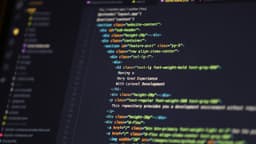How to Properly Normalize Data for Deep Learning Models?
Have you ever wondered why data normalization is a crucial step in preparing data for deep learning models? In this comprehensive guide, we will explore the significance of data normalization and provide you with practical insights on how to normalize data effectively for optimal model performance.
Why Data Normalization Matters
Data normalization plays a vital role in the training process of deep learning models. When dealing with large and complex datasets, the features can have varying scales and ranges, which can negatively impact the performance of the model.
By normalizing the data, we ensure that all features are on a similar scale, preventing certain features from dominating the learning process due to their larger magnitudes. This allows the model to converge faster and more effectively, leading to improved overall performance and generalization on unseen data.
Standardization vs. Min-Max Scaling
Two common techniques used for data normalization are standardization and min-max scaling.
Standardization
Standardization, also known as z-score normalization, involves transforming the data so that it has a mean of 0 and a standard deviation of 1. This technique is suitable for features that follow a normal distribution.
Here's a simple example in Python using sklearn to standardize data:
Python
Min-Max Scaling
Min-Max scaling, on the other hand, scales the data to a fixed range, typically between 0 and 1. This method is useful when the features have varying ranges and do not necessarily follow a normal distribution.
Here's an example of min-max scaling in Python:
Python
Both standardization and min-max scaling have their advantages and are suitable for different types of data. Experimentation is key to determining which normalization technique works best for your specific dataset and model architecture.
Handling Categorical Data
In deep learning tasks, it is common to encounter categorical features that need to be encoded before normalization. One-hot encoding is a popular technique used to convert categorical variables into a format that can be fed into the model.
Here's how you can apply one-hot encoding to categorical features using pandas in Python:
Python
After encoding the categorical features, you can proceed with normalizing the entire dataset using the techniques mentioned earlier.
Avoiding Data Leakage
One critical aspect to keep in mind when normalizing data is to ensure that the normalization is performed on the training set only.
Data leakage can occur if normalization is applied on the entire dataset before splitting it into training and testing sets, leading to inflated performance metrics and unrealistic evaluation results.
Always normalize the training data first and then apply the same normalization parameters to the testing set. This ensures that the model generalizes well to unseen data and produces reliable performance metrics.
Real-world Applications
Data normalization is not only limited to deep learning tasks but is also widely used in various domains such as computer vision, natural language processing, and time series analysis.
In computer vision tasks, normalizing pixel values between 0 and 1 can improve the convergence of convolutional neural networks (CNNs) and enhance the model's ability to extract meaningful features from images.
Similarly, in natural language processing tasks, normalizing word embeddings or text features can lead to better performance of recurrent neural networks (RNNs) and transformer models, ultimately improving text classification and sentiment analysis tasks.
In time series analysis, normalizing historical data can help in predicting future trends more accurately, especially in forecasting tasks involving stock prices, weather patterns, and energy consumption.
Data normalization is a fundamental preprocessing step that significantly impacts the performance and generalization of deep learning models. By ensuring all features are on a similar scale, we allow the model to learn effectively and make informed predictions on new data.
Remember to choose the appropriate normalization technique based on your data characteristics and always avoid data leakage by normalizing the training set separately from the testing set.
Next time you prepare your data for a deep learning project, make sure to prioritize proper data normalization for optimal model performance and robustness. Your models will thank you for it!












